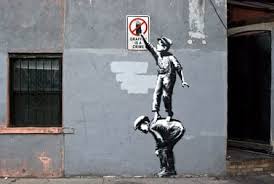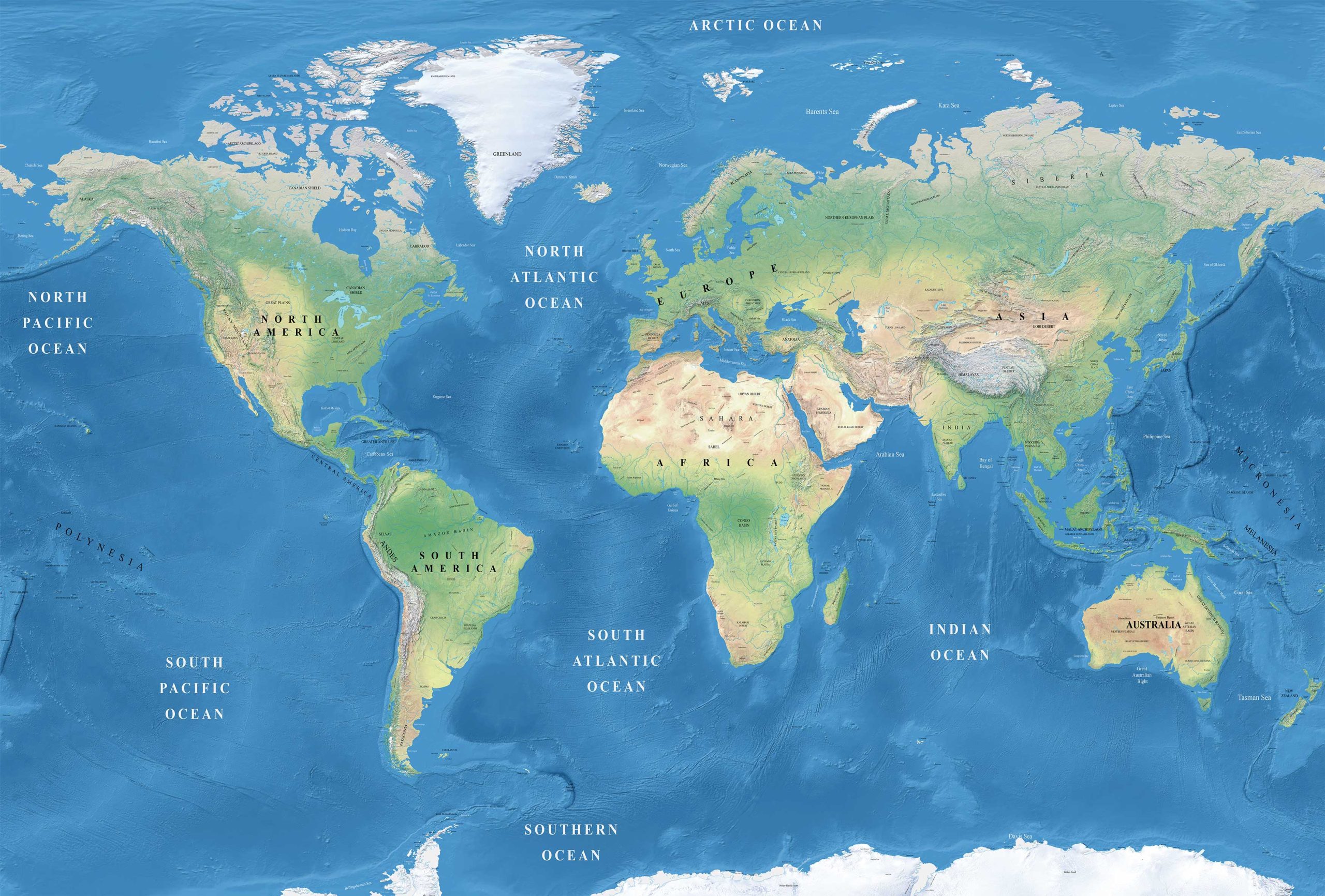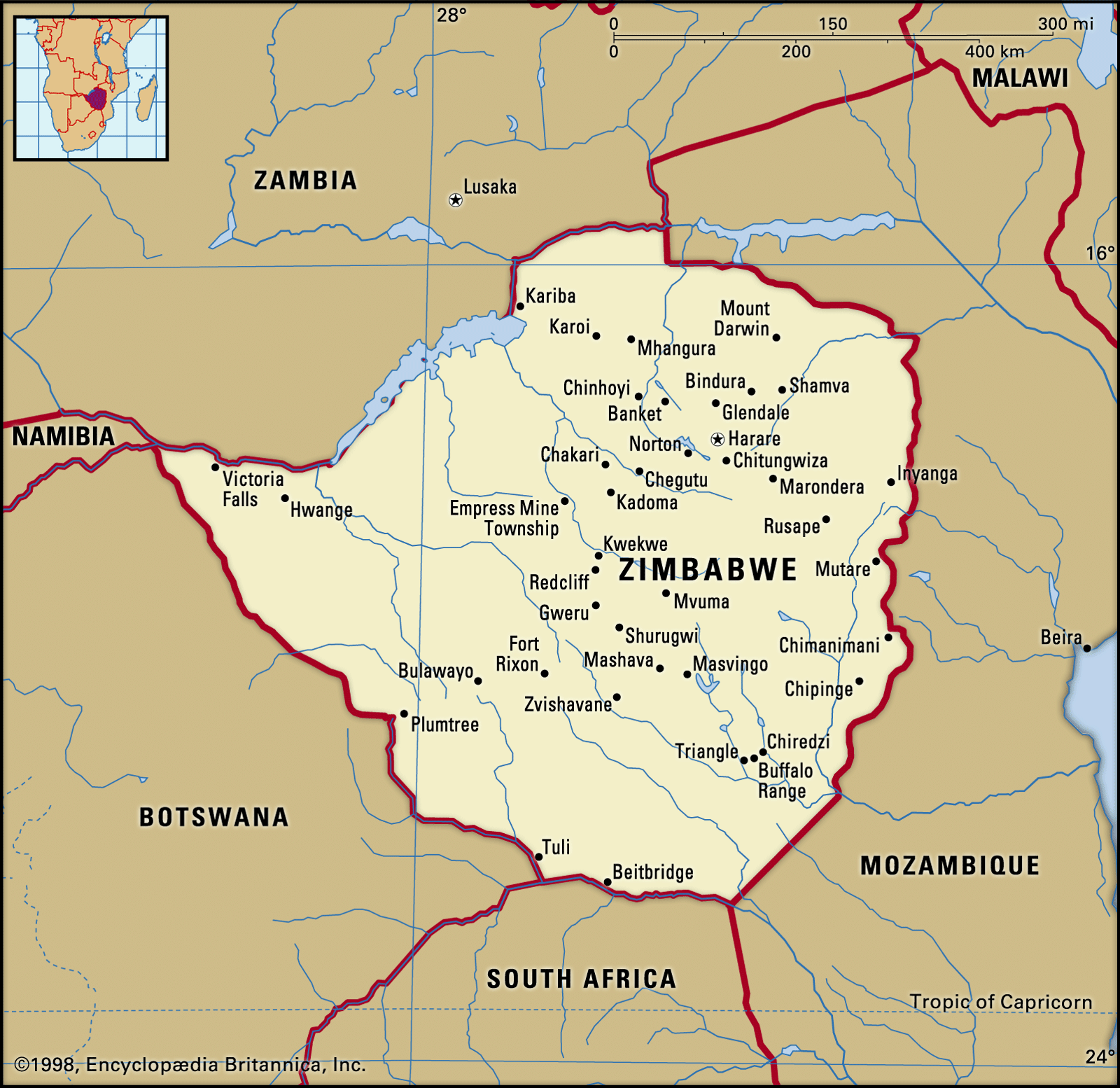Crime statistics aren’t just cold numbers on a chart—they’re stories of how societies function, struggle, and adapt. Nations with high crime rates often wrestle with deep-rooted issues like corruption, weak governance, and economic inequality, while low-crime countries thrive on strong institutions, trust in law enforcement, and cohesive communities. Today, the crime landscape is evolving: climate change is fueling violence, digital fraud networks are crossing borders, and cybercrime is fast becoming as dangerous as street crime.
Why Crime Rates Vary So Much?
What accounts for these differing statistics? First, strong institutions and societal trust play a crucial role. Nations such as Qatar, Japan, Switzerland, and Taiwan benefit from low crime rates, partially due to effective law enforcement, united communities, and lower levels of economic disparity.
In contrast, countries with elevated crime rates frequently confront a combination of challenges: political instability, drug-related issues, poverty, and inadequate public services. For example, Venezuela remains a center of violent crime as a result of political crisis and economic decline.
Additionally, areas affected by conflict and unstable countries like Afghanistan or Syria find it difficult to maintain public order, leading to an environment where crime can thrive.
Finally, the metrics used to measure crime may differ based on what is included and how it is defined. Some nations provide more detailed data, while others may underreport or have a narrow interpretation of what constitutes crime.
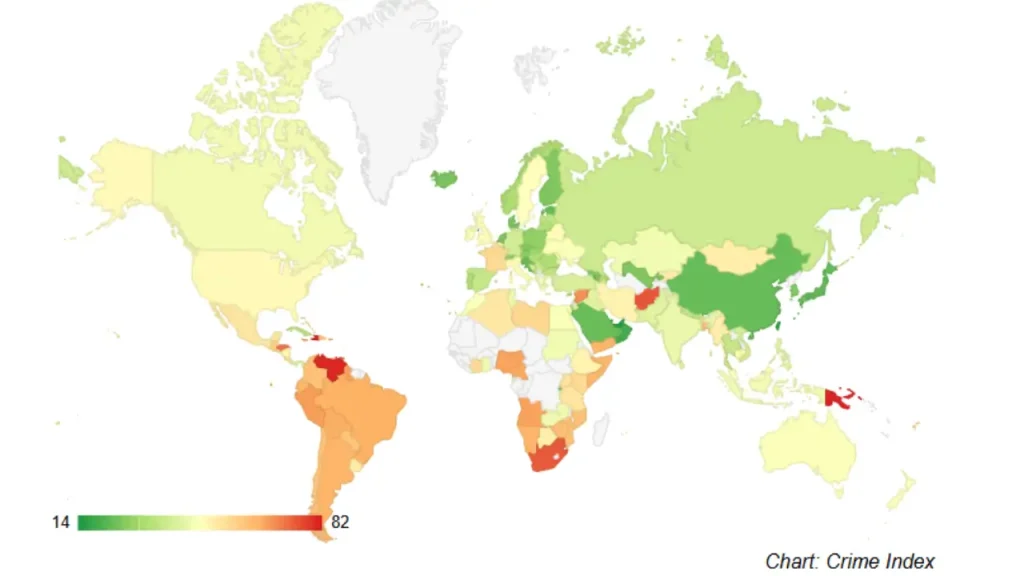
Highest Crime Rate Countries 2025
Global crime rates exhibit significant differences influenced by economic conditions, governance, the effectiveness of law enforcement, and cultural norms. As projected for 2025, Numbeo’s Crime Index indicates that the countries with the highest crime rates are Venezuela ( 83.8), Papua New Guinea (80.8), South Africa (76.9), Afghanistan (76.3), and Honduras ( 74.5). These countries encounter a combination of issues such as political unrest, widespread poverty, and strong criminal organizations that considerably raise crime rates.
Safest Countries with Lowest Crime
Countries that stand out for their notably low crime rates include Qatar (2.1), the United Arab Emirates ( 15.2), Taiwan ( 15.5), Oman (20.3), Switzerland (21.6), Hong Kong (22.0), Japan ( 22.2), and Armenia ( 22.8) according to Data PandasNumbeo. These countries enjoy the advantage of robust institutions, high levels of social trust, efficient law enforcement, and thorough welfare programs that contribute to crime prevention.
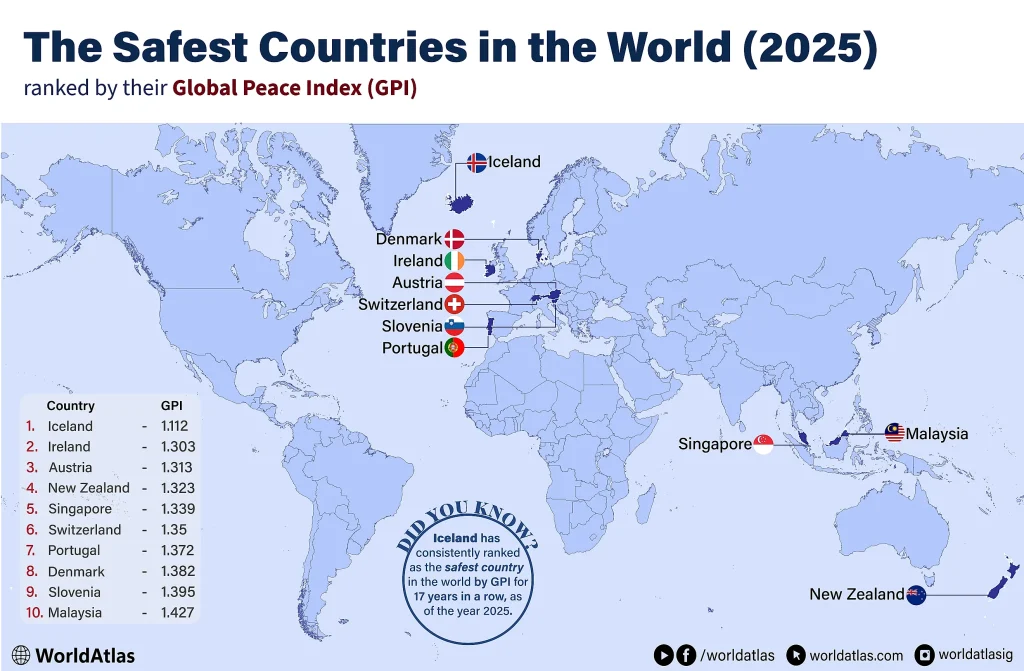
Violent Crime & Homicide Rankings
Crime does not manifest uniformly across various categories. According to the Datapandas data, when examining homicide rates—a crucial measure of violent crime—Saint Kitts and Nevis ranks highest, with approximately 64 homicides per 100,000 individuals, followed by Saint Vincent and the Grenadines (51.3), Jamaica (49.4), Ecuador (45.7), and South Africa (43.7). This indicates that even smaller nations can experience exceptionally high rates of deadly violence, occasionally exceeding those of larger countries.
These statistics point to gang wars, drug cartels, and weak law enforcement systems.
- Saint Kitts & Nevis (64)
- Saint Vincent & the Grenadines (51.3)
- Jamaica (49.4)
- Ecuador (45.7)
- South Africa (43.7)
Climate Change and Crime in Australia
Certain nations have experienced significant rises in particular types of crime due to changes in climate or society. For instance, Australia is expected to experience an extra 1.64 million crimes by the year 2100, mainly as a result of increasing heat caused by climate change—underscoring a troubling connection between higher temperatures and aggressive conduct.
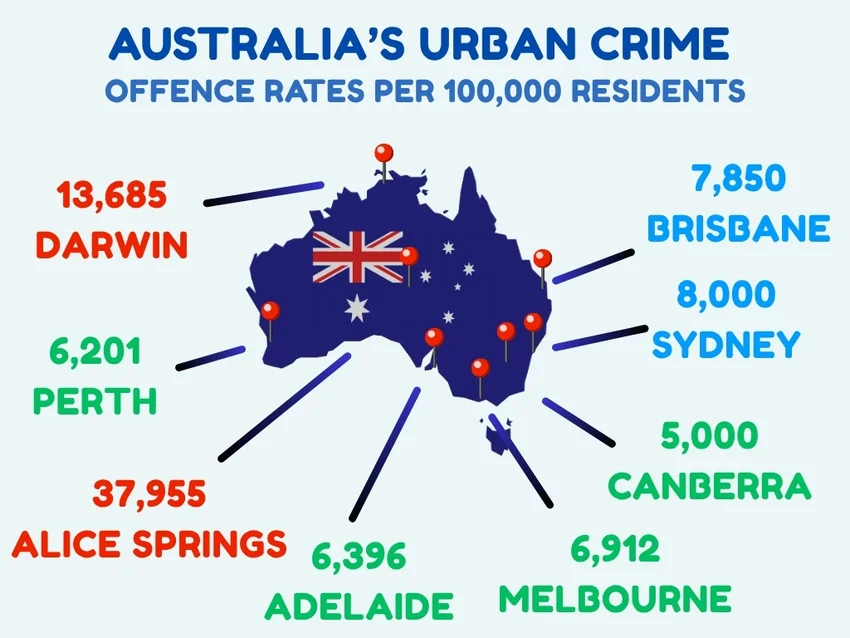
Europe’s Changing Crime Landscape
Sweden and the UK have relatively high sexual assault and robbery statistics, partly due to broader legal definitions and transparent reporting. Sweden also faces gang violence, but improved policing reduced gun deaths by 35% between 2022 and 2024.
Organized Crime and Cybercrime Growth
As reported by the UN, scam syndicates in Asia rake in $40 billion each year, extending their reach from East Asia to Africa, Latin America, and South Asia. These fraudulent activities include romance scams, deepfake technology misuse, and cryptocurrency fraud. While conventional mafia-style crime is on the decline, the digital counterpart of organized crime is surging globally.
Regional Crime Comparisons
Africa: South Africa, Nigeria, and Lesotho are plagued by high levels of violent crime, driven by inadequate policing and social inequality.
Latin America: Venezuela, Honduras, and Brazil are recognized as murder hotspots largely due to the influence of drug cartels.
Asia: India and Pakistan are experiencing an increase in cases of rape and cybercrime, while Japan continues to rank among the safest countries.
Europe: Eastern Europe shows lower official crime rates, though this is often attributed to underreporting rather than genuinely safer environments.
Middle East: The Gulf nations, such as Qatar and the UAE, are noted as the safest largely due to stringent policing measures and extensive surveillance.
Crime statistics are more than numbers—they reflect social realities ranging from institutional strength to environmental crises. High crime nations often face complex challenges like corruption, weak governance, and economic despair, while low-crime nations enjoy stability, strong institutions, and cohesive communities. New threats—from climate-driven violence to the rise of transnational scams—are reshaping the crime landscape globally.
Understanding these patterns is essential for policymakers, researchers, and citizens alike. Whether you’re comparing crime rates by country, assessing national safety for travel, or analyzing long-term trends, this global snapshot offers clarity and insight.
Social scenario
Global crime data reveals a landscape of disparities: from extremely secure nations with minimal crime rates to countries plagued by violence, corruption, and fraud. Visual aids and rankings assist citizens, policymakers, and travelers in grasping where dangers may exist. More than just figures, crime represents a human narrative—influenced by governance, legal systems, environmental changes, and cyber threats. The future of global safety relies on addressing underlying issues such as inequality, corruption, and the effects of climate change.
ALso Read: US Passport Ranking 2025:Strength and Visa-Free Countries
